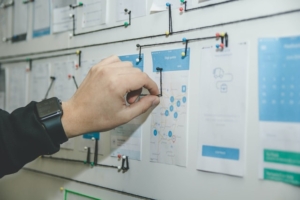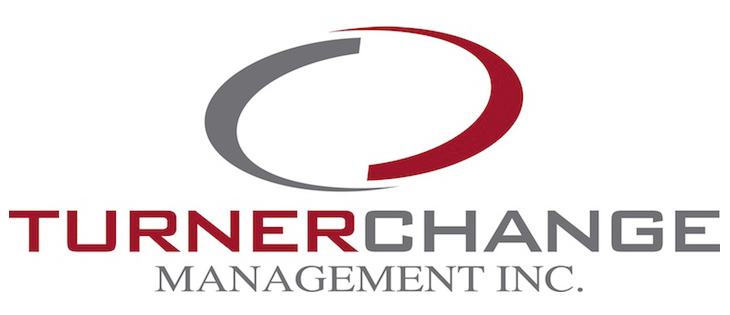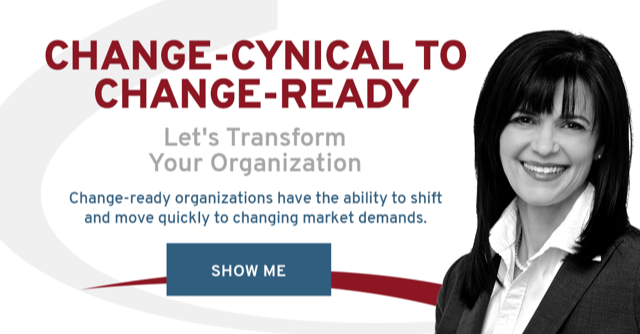Leading and managing change is not always easy and it can be challenging to know what to do in every situation, even when you have a change management methodology. For several years now I have been a fan of finding and using key words to help keep me focused and guide my thinking.
I have done the same thing with my definition of change management. I define change management: as the process needed to enable people in an organization to transition from their current environment and adopt the new work environment or intended outcome. Within this definition are four key words that can help you stay focused on the right things and guide your thinking when enabling change in your organization.
- Process. Change is a process that starts with an event or a decision. Understanding and working with the process is critical to your success. One reason change fails, even when using a change management methodology, is leaders focus too much on the steps of the methodology and not enough on the people’s response to the process of change.
For example, you ma ke the decision to implement a new sales technique. At this point no change as occurred, only a decision to make a change. Change occurs as you and your sales team move through the process. It begins with understanding the need and outcome, then you become willing to let go of your current way of working. Finally, you adopt new ways of working to achieve the desired outcome of the new sales technique.
ke the decision to implement a new sales technique. At this point no change as occurred, only a decision to make a change. Change occurs as you and your sales team move through the process. It begins with understanding the need and outcome, then you become willing to let go of your current way of working. Finally, you adopt new ways of working to achieve the desired outcome of the new sales technique.
- Enable. The process of change is a personal internal journey for every person. That’s why it’s not possible to manage another person’s journey. However, it is possible, and it is the leaders’ role to create the conditions and environment that encourages, motivates, prepares, and supports people to make the journey as comfortably as possible.
 For example, one client who was using a physical move to drive a business transformation began by engaging the employees in conversations to explore the need and how the new physical location could support the transformation. They created and set up a model of the new workspace, complete with the actual furniture. Employees were given time to explore the space, talk about both the pros and cons of the space. At the same time existing processes, policies, and procedures were aligned to the desired business model. By the time employees made the planned physical move, most of the business transformation had already begun.
For example, one client who was using a physical move to drive a business transformation began by engaging the employees in conversations to explore the need and how the new physical location could support the transformation. They created and set up a model of the new workspace, complete with the actual furniture. Employees were given time to explore the space, talk about both the pros and cons of the space. At the same time existing processes, policies, and procedures were aligned to the desired business model. By the time employees made the planned physical move, most of the business transformation had already begun.
- People. Your organization won’t change unless people change their behaviours, work activities, attitudes, and thinking. Every organizational change requires individual change. For that, you need people readiness.
People readiness is different than organizational readiness. Organizational readiness refers to the conditions within the organization that must be in place to complete an event, such as the construction of new physical space or the purchase of new hardware and software. People readiness is the willingness and ability of a person to engage in the activities and behaviours necessary for the change to be integrated.
It is possible to have high levels of organizational readiness without people readiness, but without people readiness you have little chance for success.
When people (you, me, and every human being) feel ready, when we have tapped into our positive core, feel heard, strong and capable we move toward change and not away from it.
- Adopt. To sustain your desired outcome and get a return on your change investment you need people to adopt the new behaviours, attitudes, activities and any other changes as their normal way of working.
Many leaders talk about helping their team adapt but adapting and adopting are different. When we are adapting to a new situation we hold out the hope that things will go back to the way they were. We create workarounds to make the new process, technology or environment work, look, or feel like the old one.
 When we adopt the new situation it becomes the normal way. We stop looking for a way to go back. We are fully committed to living in a new environment.
When we adopt the new situation it becomes the normal way. We stop looking for a way to go back. We are fully committed to living in a new environment.
Keeping these four words in mind as you launch and move through every organizational change will help you:
- Set up each individual change initiative for success
- Create more sustainable change and get a greater return on your investment
- Reduce the strain change has on the day-to-day operation of your organization
- Increase your organization’s and your team’s willingness and capacity to handle future changes.
Dawn-Marie
P.S. Which word do you need to focus on to achieve healthier more sustainable change in your organization?
*References available upon request.





Leave a Reply
Want to join the discussion?Feel free to contribute!